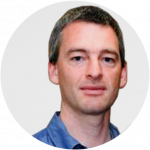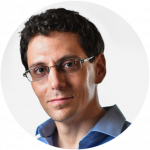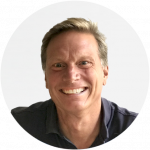Index
Overview
Programme
Travel and speaker info
Hotels and accommodation
Special events
Invited speakers
Programme committee
Registration
Submission guidelines


Johan Verbeeck received his PhD degree (2002) from the University of Antwerp. Currently he is a full Professor at the electron microscopy group (EMAT) of the University of Antwerp. Johan Verbeeck is an expert in the field of electron microscopy and electron energy loss spectroscopy focusing both on applications in state of the art materials science as well as on developing new techniques. He is the author of more than 200 ISI contributions and his work has been cited more than 3000 times. In 2011, he received the prestigious Ernst Ruska award for electron microscopy for his contribution to the quantification of EELS spectra and the development of electron vortex beams. He is the author of the EELSMODEL software providing model based quantification to users worldwide. In 2012 he received an ERC starting grant in order to explore the properties of electron vortex waves.

Ido Kaminer is a faculty member at the Technion Faculty of Electrical Engineeing. He studies the fundamentals of light-matter interactions in nanophotonics and in settings of 2D materials, developing new concepts for light generation in spectral ranges inaccessible by existing technology. Ido’s research specifically focuses on the light-matter interactions of shaped particle wavefunctions, in which he made contributions to the quantum electrodynamics of relativistic electron wavefunctions. Ido is an Azrieli Faculty Fellow and won a Rothschild Fellowship, MIT-Technion Scholarship, and a Marie Curie Fellowship, for his postdoc. During his PhD, Ido has discovered new classes of accelerating beams in nonlinear optics and electromagnetism, for which he received the 2012 Israel Physical Society Prize, and the 2014 APS Award for Outstanding Doctoral Dissertation in Laser Science.

Mark Kasevich is a Professor of Physics and Applied Physics at Stanford University. He received his B.A. degree (1985) in Physics from Dartmouth College, a B.A. (1987) in Physics and Philosophy from Oxford University as a Rhodes Scholar, and his Ph.D. (1992) in Applied Physics from Stanford University. He joined the Stanford Physics Department faculty in 1992. From 1997-2002 he was a member of the Yale Physics Department faculty. He returned to Stanford in 2002. His current research interests are centered on the development of quantum sensors of rotation and acceleration based on cold atoms, application of these sensors to tests of gravitation and quantum mechanics, investigation of many-body quantum effects in cold atomic vapors, and investigation of quantum-enhanced imaging methods. He co-founded AOSense, Inc. (2004) and serves as the company’s Consulting Chief Scientist

